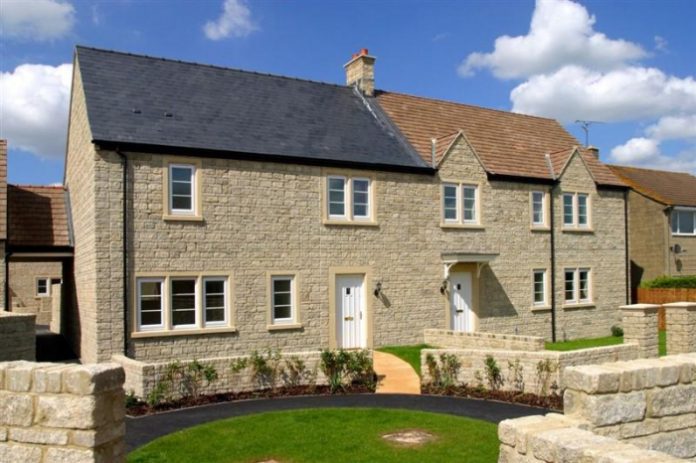The concept of Build to Rent (BTR) and more specifically, its regional iteration, BTR suburban communities, is a relatively new property type.
BTR, together with private market housing and affordable housing, falls within the C3 Use Class. But developers and operators of this innovative form of property development are now asking the question, should it be bound by the same limitations as traditional housing developments, or should new rules apply?
The Build to Rent (BTR) sector is growing exponentially: The British Property Federation (BPF)’s Build to Rent Q3 2022 report, showed that the sector had grown 15% year-on-year, with a total of over 240,000 homes either in planning, under construction, or completed.
Initially, the BTR model was designed to appeal primarily to London-based professionals of the Gen Z and Millennial cohorts. But recently regional growth has surpassed that of the capital: The BPF’s Build to Rent Q3 2022 statistics show regional BTR growing at almost triple the pace of that in London: 20%, compared to 7%.
The fast-emerging BTR suburban communities provide something very different. These are family homes, located outside urban areas, which maintain the strong sense of community which made traditional BTR such a success, albeit the co-living element is present in landscaped outdoor areas suitable for families, as opposed to indoor games rooms and gyms. The intrinsic values of BTR are continued in this evolving format: high standards in service and management, a strong focus on sustainability and most importantly, a rich variety of services and amenities.
The traditional housing estate – the standard product of most developers’ output for the past half century – is on the decline. Development has evolved from being solely residential, to a more integrated product, more community-orientated and more reflective of local areas’ specific needs.
Although the trend towards genuinely sustainable communities has been emerging for some time, it was undoubtedly hastened by the pandemic as ‘community’ took on a new meaning and the ban on unnecessary travel created a need for easy access to daily facilities and the 15 minute neighbourhood concept became common parlance in the development industry.
Enlightened clients of LRG have extended the concept to include a community hub or incubator: a community facility and a workplace, and often much more (increasingly such schemes include nano breweries, bike hire facilities, rapid electric charging points) all under one-roof.
And so with a range of house types and tenures, a strong emphasis on community and extensive services and employment opportunities, BTR suburban communities have considerable potential to deliver on the levelling up agenda while also addressing the housing crisis.
This raises the question, to what extent should affordable housing be delivered as part of the package of community benefits?
According to 2021 figures, affordable units accounted for just 6% of all BTR and much is provided off-site through Section 106 agreements. This is perhaps because serviced city centre apartment blocks – the prevalent form of BTR until very recently – faced logistical challenges in accommodating traditional affordable housing, especially that managed by a registered provider.
Policy is notably lacking. There are just four references to BTR in the current NPPF, three of which are in the glossary. In the only mention in the body of the 75 page document is in the context of affordable housing: ‘Where major development involving the provision of housing is proposed, planning policies and decisions should expect at least 10% of the total number of homes to be available for affordable home ownership…[but] exemptions to this 10% requirement should be made where the site or proposed development provides solely for Build to Rent homes’. The industry had anticipated that BTR would be addressed more comprehensively in December’s re-write of the NPPF, but the new version, which is currently being consulted upon, has no reference to BTR whatsoever.
And although BTR schemes now exist in 45% of all English local planning authorities (LPAs), the majority (London being a notable exception) do not yet have a policy in place, each instead taking a case-by-case approach based on viability. As the sector matures and the BTR suburban communities model becomes increasingly prevalent, affordable housing policies for the sector will no doubt become more established.
So should BTR expect to deliver as much as a third of the scheme as ‘affordable’, as more traditional developments do? Or does the considerable potential of BTR suburban communities to provide community facilities reduce the need for affordable housing provision?
It is important to bear in mind that BTR suburban communities serve a diverse demographic. In addition to meeting the changing needs of BTR’s original demographic (providing a home for maturing Millennials as they embark on family life outside London) a typical BTR suburban community enables multi-generational living: accommodating several generations of a family in the way that is impossible in many locations, while also addressing the significant shortfall in later living accommodation and extra care facilities. There are distinct advantages in delivering a variety of uses and tenures, and thereby a diverse community – benefits both to society and the developer’s bottom line.
Partnerships with local authorities, in providing homes, social care, education and leisure facilities have real potential. Joint ventures which enable BTR to cross-subsidise other property assets can deliver bespoke schemes, ideally suited to a specific location and its unique needs.
BTR offers huge scope for community benefits and that while affordable housing / DMR will often feature among these, the inherently innovative BTR model would benefit from having the flexibility to provide a wider selection of community benefits, meeting the most pressing needs of the local community.







